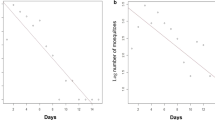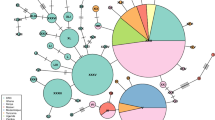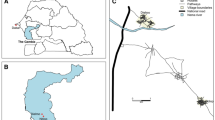Abstract
ATTEMPTS to colonize A. funestus funestus Giles, the second most important vector of malaria in Africa, commenced in 1954 and continued for three years. During 1955–56 the first successful colony of this mosquito was established from eggs laid by wild-caught females of A. funestus, given alternative feeds on human and guinea pig blood. The egg production of this colony was of short duration and small quantity, and the colony eventually died out after a few months.
This is a preview of subscription content, access via your institution
Access options
Subscribe to this journal
Receive 51 print issues and online access
$199.00 per year
only $3.90 per issue
Buy this article
- Purchase on SpringerLink
- Instant access to full article PDF
Prices may be subject to local taxes which are calculated during checkout
Similar content being viewed by others
Author information
Authors and Affiliations
Rights and permissions
About this article
Cite this article
SERVICE, M., OGUAMAH, D. Colonization of Anopheles funestus. Nature 181, 1225 (1958). https://doi.org/10.1038/1811225b0
Issue date:
DOI: https://doi.org/10.1038/1811225b0
This article is cited by
-
Fitness characteristics of the malaria vector Anopheles funestus during an attempted laboratory colonization
Malaria Journal (2021)
-
Wild populations of malaria vectors can mate both inside and outside human dwellings
Parasites & Vectors (2021)
-
Efficient method for establishing F1 progeny from wild populations of Anopheles mosquitoes
Malaria Journal (2017)



